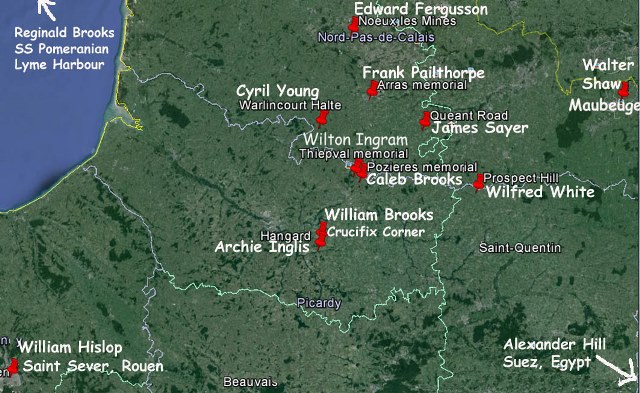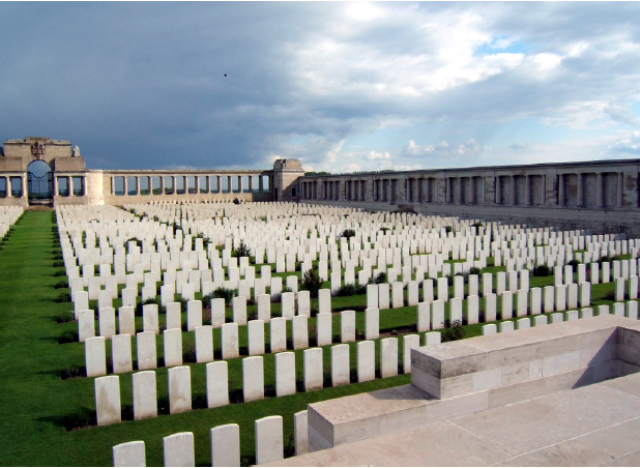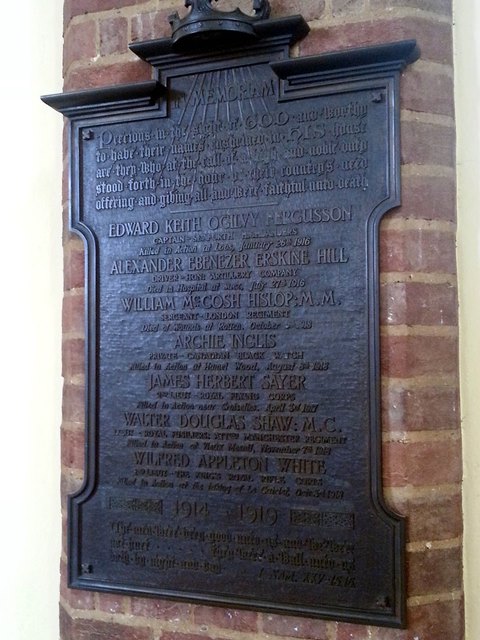
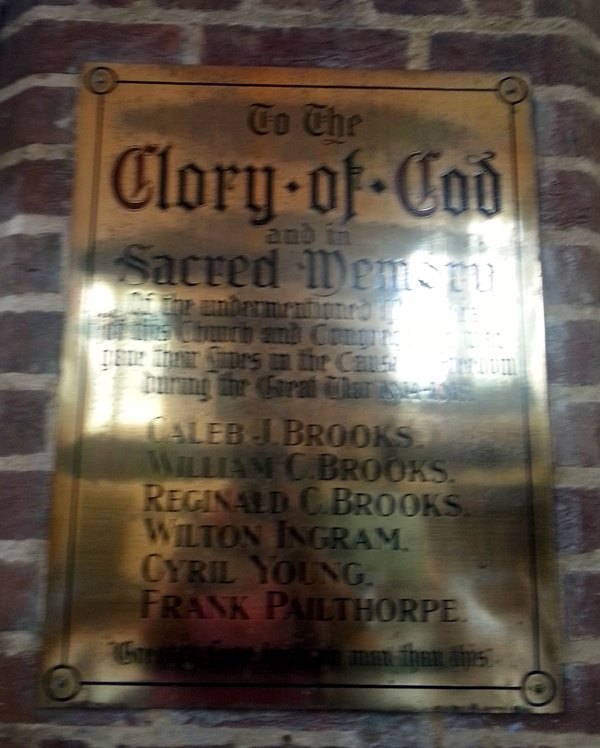
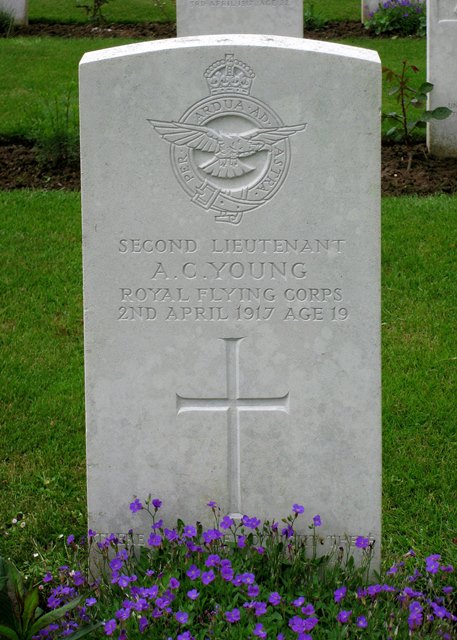
Remembering the fallen, 1914-18
Elaine McDowall investigates the WURC war memorials



On the 100th anniversary of the start of the 'war to end all wars', I turned to the minutes of the Elders and Deacons meetings hoping to find out how that war affected Wallington Congregational Church at Holmwood Gardens (we don’t have records for Christ Church). It was barely mentioned. I was initially rather shocked. Didn't they know there was a war on? The truth is of course just the opposite. This war invaded daily life - few households would remain untouched – I guess there was just no need to need to mention it specially.
In 1914 Wallington Congregational Church was a small recently established church. Six of its family were killed in the Great War. Christ Church, larger and longer established, lost seven men. The plaque from Christ Church gives a fair amount of information, but for the Holmwood Gardens casualties I had to look elsewhere.
The first casualty came 18 months into the war. Edward Fergusson, son of the minister at Christ Church, was a captain in the Seaforth Highlanders, mentioned in despatches, and died near Loos in January 1916. The Battle of Loos was over, but men continued to die there.
Minutes of a Holmwood Gardens meeting in November 1916 listed the church members serving in the war. A sad note against the name of Wilton Ingram simply states that he had been ‘missing since July’. Wilton and his wife, probably newly married and living in Helvellyn, Rotherfield Road, Carshalton, had joined the church in 1912. His war record gives his date of death as 1st July 1916. He is one of thousands missing presumed killed on the first day of the Battle of the Somme.
Casualties were not confined to the Western Front. Alexander Hill, a driver with the Honourable Artillery Company, died in Suez in July 1916 aged 38. Nor were they confined to the Army. Cyril Young and James Sayer, 19 year old neighbours from Marchmont Road, Wallington, served as second lieutenants in the Royal Flying Corps and died near Arras one day apart in early April 1917.
Most of the men did serve in the army though, mainly with regiments from the South East and in specialist battalions such as the Royal Engineers. Frank Pailthorpe, a private in the Queens Royal West Surrey Regiment, died on 2nd May 1917 and is commemorated at Arras.
Each individual death was a tragedy but spare a thought for the Brooks family of Waverley, 32 Stanley Road, Carshalton. In the 1911 census five of their six children were living, three boys not yet in their teens, a daughter and a baby of a few months. Those three boys - Caleb, William and Reginald Brooks, were killed in the space of five weeks in the spring of 1918. The eldest was just days short of his 20th birthday and the youngest a 15 year old cabin boy on a merchant navy vessel.
As the war drew to a close the casualties continued. Archie Inglis, a Private in the Canadian Black Watch was killed at Hamel Wood in August 1918. Wilfred White, aged 19, a Second Lieutenant in the Kings Royal Rifle Corps and previously a scholar-elect at Exeter College Oxford, was killed at Le Catelet on 3rd October. William Hislop MM, a serjeant in the London Regiment, died near Rouen three days later. Finally Walter Shaw MC, a Lieutenant in the Royal Fusiliers, died aged 37 on 7th November, just 4 days before the war ended.
Until now these were just names to me, inscribed on the memorial plaques on our walls and read out once a year on Remembrance Sunday. Now I know where and when they died but also where they lived and who they left behind. They’ve become real and their deaths still have the power to stir the emotions nearly a hundred years on.
If you want to know more - check out this Dropbox link: Wallington URC War Memorials
